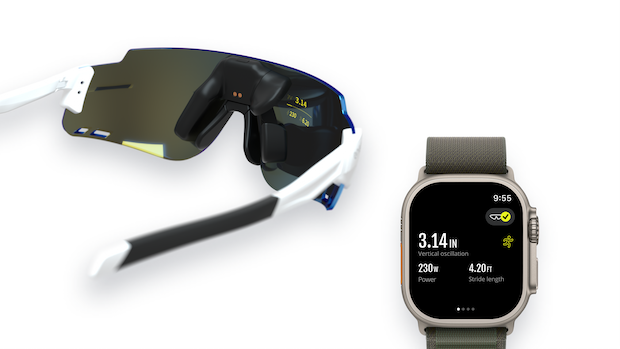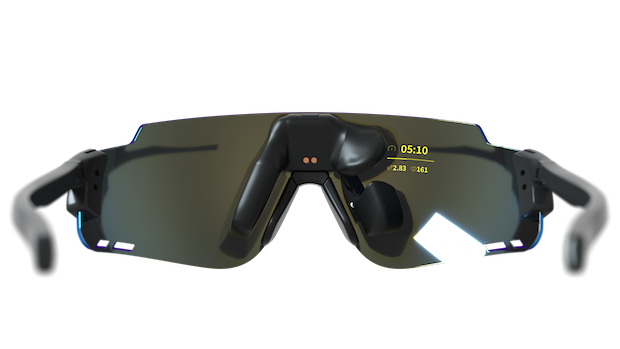When and How to Deviate from Your Training Plan

This article is the second in a four-part series, presented by ENGO. In this series, Matt Fitzgerald will teach you how to apply new advances in real-time training data for maximum benefit at various stages of athletic development. Learn more about ENGO here.
You’re not the same athlete you were yesterday, nor will you be the same tomorrow. Due to subtle day-to-day fluctuations in heart rate variability, maximal muscle contractile force, hormonal status, mood state, and countless other physiological and psychological variables, athletes never know exactly what they’re going to get when they start a workout.
This presents a challenge for training plan execution. Because the body is ever-changing, the workout you planned for any given day is not always the workout you need. Too often, athletes fail to realize they’ve done the wrong workout until it’s too late. For example, the plan tells you to complete eight intervals in Zone 3, but when you analyze the file after completing your workout, you discover that despite hitting the prescribed power target, your heart rate was mostly in Zone 4, perhaps due to one of the factors listed above—an overreach that could have a negative ripple effect on subsequent training.
Real Time Data to the Rescue
To avoid such self-sabotage, athletes need to make on-the-fly adjustments to ensure each workout serves its intended purpose. Devices like ENGO that feature a near-eye display of real-time training data can help. By supplying the athlete with continuous access to performance metrics such as power and pace, they facilitate swift and appropriate adjustments that prevent unintentional overreaching. But these adjustments don’t happen automatically—responsibility lies with the athlete to make the best use of the data.
The key to doing so lies in calibrating your subjective effort perceptions to objective performance metrics. One thing we all know from experience is that when we’re having an off day, we can feel it. This was shown in a 2012 study in which cyclists completed 20-km indoor time trials on two occasions. As expected, each cyclist performed slightly better in either the first or the second time trial due to small differences in their overall state. Interestingly, however, these differences were not captured by any of the physiological measurements taken during the tests. The biggest difference between the two performances was that the cyclists felt worse when they performed worse.
The goal of a time trial, naturally, is to finish as quickly as possible. Succeeding in this aim requires that you know how you should be feeling at various points. You may have a target pace or power in mind when you start, but because this number is unlikely to align perfectly with your performance limit on that day, you need to key off it in a loose way and allow perceived effort to have the final say. With ENGO, the same approach can be used in workouts to ensure they serve their intended purpose, helping you to learn to recognize how a given state of performance actually feels and ultimately eliminate post-activity surprises and disappointments.
3 Steps to Smart Adjustments

Making smart adjustments to workouts is as easy as 1-2-3. Here are the steps:
Step 1 – Calibrate your sense of effort by paying attention to how you feel at different paces, power outputs, and heart rates during your normal workouts. Your eyes are on ENGO’s near-eye display but your mind is on your internal sense of how hard you’re working, and you’re aiming to link the numbers you see to the perceptions you feel. Also pay attention to the relationship between your heart rate (a physiological measure of intensity) and your power and pace (output measures of intensity), which can also be useful in making adjustments to workouts, as we’ll see momentarily.
The table below, which shows how rate of perceived exertion (RPE) correlates with different intensities in the most widely used zone scale, will assist you with this calibration process. Note that this zone sale can be used with any intensity metric.

Step 2 – Test your ability to maintain a steady pace, power, or heart rate between glances at your data. Let’s say you’re running 3-minute intervals at 7:00 per mile. In this scenario, you might check your pace every 30 seconds to make sure you’re on track and adjust as necessary. The rest of the time you’re using perceived effort to stay locked into that pace. ENGO is especially helpful here because you can shift your focus back and forth between your data and the road instantly and effortlessly, without breaking stride to look at your wrist or dropping your head to look at your bars.
Step 3 – Adjust your pace, power, or heart rate in workouts as necessary to ensure they stay true to their purpose. In general, this means reducing your output to make sure workouts aren’t harder than they’re supposed to be when RPE is higher than normal relative to pace, power, or heart due to fatigue from prior training, poor sleep, challenging weather, hormone levels, life stress, an inadequate breakfast, or some other factor.
4 Common Scenarios
Let’s take a look at four different scenarios and how an athlete who has mastered these steps will respond to each.
Scenario 1: The athlete is doing a threshold workout targeting functional threshold power (FTP), which for them is 225 watts. Normally, this intensity corresponds to an RPE of 6, but today, for whatever reason, it’s a 7.
Response: The athlete swipes to screen 2 on their ENGO eyewear, which shows their current heart rate. When subjective effort is above normal, heart rate is sometimes also elevated, allowing the athlete to adjust their workout simply by switching from power or pace to heart rate as their primary intensity guide. Sure enough, the athlete finds that their current heart rate is 165 BPM, whereas it is normally 160 BPM at FTP. So, the athlete reduces their output and completes the threshold segment at 160 BPM.
Scenario 2: The same thing happens as in scenario 1, except this time the athlete’s heart rate is normal—only their RPE is elevated.
Response: Knowing that FTP falls toward the upper end of Zone 4, the athlete swipes back to screen 1 and reduces their power to the lower end of Zone 4. After checking internally to confirm that their RPE is now at the desired 6 rating, they note their current power, which happens to be 215 watts. This number become the new target for the remainder of the segment.
Scenario 3: Same thing again, only this time the athlete feels unusually strong, their RPE barely exceeding 5 at 225 watts.
Response: 4: The athlete sticks to the plan, completing the threshold segment at the prescribed wattage. The following week, however, the athlete does an FTP test that confirms they’ve gotten fitter and earned new zones. Discipline is required to avoid getting carried away when you’re having a great workout, but prudence dictates that you do indeed hold back and reinvest your gains in future training.
Scenario 4: The athlete is doing a 2-hour run in Zone 2, which for them has an upper limit of 140 BPM. But today this intensity feels harder than normal.
Response: Instead of adjusting their pace, the athlete maintains it but shortens the run to 90 minutes. Keying off ENGO, they stop at the point where their heart rate begins to decouple from their pace (i.e., when HR rises above 140 BPM despite no change in pace). This is generally the better way to go in long endurance workouts, where the challenge comes from the duration of the session rather than from the intensity.
Remember, the better you are at truly understanding relative effort—in real-time—the more effectively you’ll be able to predictably manage effort, and set and achieve goals accordingly.
Looking Ahead
There are other possible workout scenarios requiring adjustments, but these examples cover the most common situations athletes encounter. In part three of this series, I will present a set of workouts that function especially well with ENGO as tools for testing and redefining performance limits.

